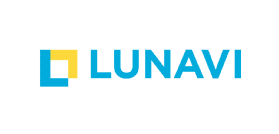
jrwasserman - Fotolia
4 considerations for rebranding a company in the MSP sector
Planning to rebrand? Here are some factors to consider, whether you're seeking a new look for a maturing business or a unified image that spans multiple acquisitions.
Rebranding a company requires months of introspection, research and creativity -- all with the goal of expressing a clear and unmistakable market identity.
A number of MSPs relaunched their brands amid the turbulence of 2020, though some efforts began well before the COVID-19 pandemic took full effect in March. Service provider executives learned about brand development from the process and their experiences address a few issues that other organizations can learn from if a rebranding campaign is on tap for 2021.
1. What's the motivation to rebrand?
Companies rebrand for different business reasons, and each calls for a different brand development approach.
SADA Systems Inc., a business and technology consulting firm based in Los Angeles, marked its 20th anniversary in 2020. The company's rapid expansion in the Google Cloud ecosystem and its shift toward enterprise customers contributed to the need to retell the corporate story, said Tony Safoian, president and CEO at SADA.
"We've been growing so fast, we never paused to reach out and rearticulate … our offering to the market and our capabilities," he said.
SADA, now approaching $1 billion in total contract value bookings, decided in 2019 to focus on Google Cloud Platform (GCP) consulting as its primary business. The company sold a Microsoft business unit to another MSP and ended a foray into Workplace by Facebook consulting. The rebranding effort rolled out in October 2020 and aims to establish SADA as a must-have partner for enterprises' Google cloud adoption. Safoian pointed to one of the company's new taglines: "You can go Google … or you can go Google with SADA."
 Tony Safoian
Tony Safoian
A desire to build a new brand for a long-established company is a common motivation among MSPs. Many MSPs launched in the late 1990s and early 2000s and are perhaps overdue for a new look. Other MSPs, however, have recently coalesced through mergers and acquisitions, which have swept the IT services market. Those organizations have a different motivation: create a brand that reflects the offerings of a newly assembled entity.
Lunavi Inc., an MSP and technology consulting firm based in Cheyenne, Wyo., began life as Green House Data, a renewable energy-powered colocation provider. The company expanded its original focus through seven acquisitions in the span of six years, including the 2018 purchase of a Microsoft Azure consultancy. Those transactions transformed the company's service portfolio to include legacy infrastructure migration, cloud-native app development, security and disaster recovery.

Green House Data cultivated a new brand to reflect its diverse offerings and relaunched in September 2020 as Lunavi. Finding a new moniker proved to be the hardest part of the process, said Shawn Mills, CEO at Lunavi. The name had to be short, available as a .com domain and capture the company's broader scope. The Lunavi label seeks to encapsulate the company's mission: illuminating a customer's technology path. "Lu" represents light and "navi" denotes navigation, according to the company.
 Luca Jacobellis
Luca Jacobellis
In other cases, rebranding stems from a need to simplify. 1Path, an MSP based in Atlanta, said high growth in recent years influenced its quest for a new look, which the company unveiled in October 2020. But making things easier for prospective customers was another factor. Before the rebranding, the "One" in 1Path was spelled out on its website and other materials, but not in its 1Path.com internet domain. The inconsistency confused people searching for the company on the web.
Clearing up that discrepancy was part of the company's "year of simplification" initiative in 2020, said Luca Jacobellis, president and COO at 1Path.
2. What makes companies stand out?
Introspection is an important step in rebranding a company. What makes one service provider different from the tens of thousands of other service providers in the market? Executives said rebranding requires MSPs to look inside for the answer.
 Shawn Mills
Shawn Mills
"We started with our employees and tried to understand … who we are and what we do best," Mills said. The process involved a full analysis of the Green House Data and acquired companies' culture, he added.
The company's rebranding research also involved polling customers to see if its self-assessment matched customers' perceptions. SADA followed a similar approach, conducting internal and external surveys and focus groups. Those conversations helped the company retell its story. The goal: extract the new narrative from employee and customer feedback and then "tell it in a way that is clear and easy to understand," Safoian said.
3. How can a company tell their story visually?
For Safoian, conveying the new narrative in words is much easier than creating imagery to reflect the updated brand. A company can wordsmith the copy to use on a rebranded website, but the greater challenge is developing graphics that match what the words are trying to say, he said.

SADA hired Siegel+Gale, a branding agency based in New York, to assist with its rebranding strategy, including the graphical component. In one move to capture the service provider's story in visual form, Siegel+Gale designed the "S" in the new SADA logo as two interlocking shapes, reflecting the collaborative nature of the company's work with customers. Safoian said his company also wanted the new logo to "demonstrate the sophistication and longevity of our brand in a way that would appeal to our enterprise clients."

At 1Path, Jacobellis said the company's new logo, which depicts an upwardly moving path extending from the "1", aims to reflect the company's "forward-thinking" approach to IT.
Corporate logos are perhaps the most obvious elements of a new image, but even details such as typefaces can reinforce a brand. SADA uses Nunito Sans, which Safoian pointed out is readily available in Google Docs and, thus, in line with its GCP business focus.
4. How will the company operate under the new brand?
Service providers must go beyond aesthetic improvements to make a new brand meaningful and not an empty signifier.
 Jeff DeVerter
Jeff DeVerter
Rackspace Technology rebranded in June 2020 with a new name and an updated business focus as a multi-cloud solutions provider. But rebranding also involved reorganizing the way the 22-year old company packages and provides its services.
"Everything we do from a technical point of view is now seen through the lens of business outcomes," said Jeff DeVerter, CTO at Rackspace Technology.
The company aims to deliver results through four core offerings: cloud, data, applications and security. In contrast, Rackspace's previous approach was to emphasize a multitude of discrete product lines: individual services for AWS, Microsoft Azure and GCP, for instance, as well as different services for private clouds and managed hosting.

The company has also addressed customers' consistency of experience, whether they are using Rackspace Technology's private or public cloud offerings, DeVerter said. The company created Rackspace Fabric software, for example, to unify governance, ticketing, billing and other management tasks across multiple clouds.
1Path also revamped its services under a new brand. For example, the company's Cloud PBX offering, based on an earlier unified communications service, was redesigned for rapid deployment. Customers can deploy the unified communications offering in as few as 48 hours, according to the company.
"Not only did we try to rebrand from a look and feel standpoint, but we have really taken a lot of time to reorganize those service offerings and how we take those to market and how we present them," Jacobellis said.
Partnering with creative agencies
MSPs may hire digital agencies, graphic designers or a combination of specialists for help with branding efforts. But executives suggested those projects should never become the sole responsibility of an outside agency. "It's not all on them to figure it out," SADA's Safoian said.
Lunavi also worked to strike a balance between outside expertise and in-house initiative. The company collaborated with branding agencies, design firms and market positioning companies, Mills said. "We went with those who came trusted and recommended to us, [but] we did a lot of the heavy lifting ourselves," he added.






